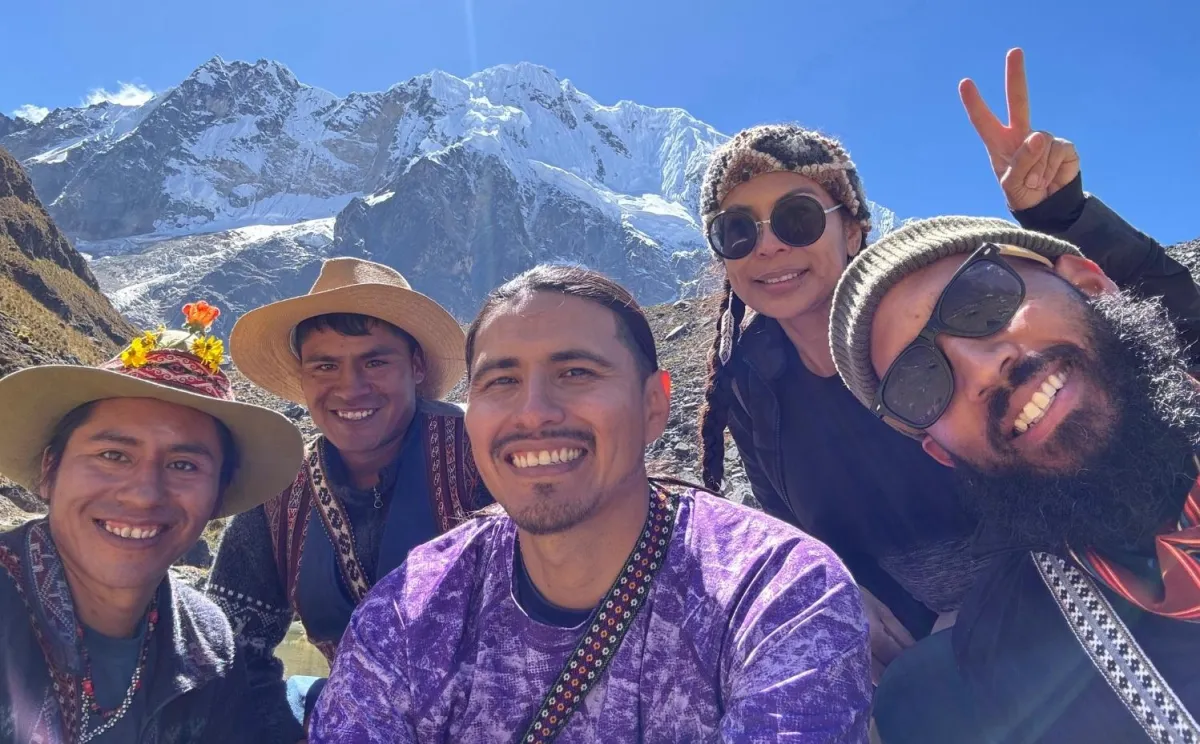
Pilgrimage as a Path to Transformation: A Sacred Journey to Machu Picchu
As we walk, we learn. We leave behind distractions, carrying only what is essential. Each step becomes a meditation, a way of aligning breath, body, and spirit. And through this process, something shifts—what once felt heavy begins to lighten, what was unclear starts to make sense. The act of pilgrimage offers something radical—a return to the sacred. To step onto a pilgrimage path is to surrender to an ancient rhythm, one that has been followed for thousands of years by seekers of wisdom, healing, and transformation.
For the Quechua people of the Andes, pilgrimage is not just a journey from one place to another—it is a deep spiritual practice, a way of building relationship with the land, the spirits, and oneself. As I prepare to guide a five-day pilgrimage to Machu Picchu from June 10-14, 2025, I want to share why this experience is more than just a trek; it is a calling into a deeper way of being.
Pilgrimage: A Journey of Connection
In Quechua cosmology, the land is alive, filled with spirits known as Apus (mountain spirits), rivers that carry healing, and ancient paths that hold the footsteps of those who came before. The act of pilgrimage is not about conquering mountains; it is about approaching them with reverence, learning from their energy, and allowing them to transform you.
This idea is not unique to the Andes. In many spiritual traditions, from the Tantric practices of India to Indigenous vision quests of North America, pilgrimage is a way of surrendering the ego, stepping beyond comfort, and allowing the land itself to teach. In my own doctoral research, I have explored how journeying to sacred places can facilitate healing, self-discovery, and a renewed sense of purpose.
What Makes This Pilgrimage Unique?
The pilgrimage I am leading is not about physical endurance or checking one of the “wonders of the world” off a bucket list. It is a guided experience of transformation and spiritual connection. Over five days, we immerse ourselves in Andean spiritual wellness practices that have been passed down for generations. Along the way, we will perform ceremonies at sacred sites, including the Temple of the Moon (Killarumiyoq), Humantay Lagoon, and the Salkantay Glacier. These rituals will help us cleanse stagnant energy, set meaningful intentions, and cultivate a deeper connection with the Apus (mountain spirits) that watch over the trail.
Here are some of highlights:
Engage in Andean and Tantric Practices – Learn rituals that honor the Apus, practice breathwork and meditation, and deepen your connection to the unseen.
Participate in Ceremony – Offer a traditional Despacho (a prayer bundle) to the Apus (mountain spirits) setting intentions for healing and transformation.
Rekindle Kinship with the Natural World – Walk with awareness, treating the mountains, rivers, and sacred sites as living relatives rather than mere scenery.
Experience the Inner and Outer Pilgrimage
For the Quechua, a pilgrimage is not merely a journey from one location to another—it is a sacred process with both an inner and outer dimension. My teacher, Tupac T’ito Q’osñipa Kuntur, along with his brother Inka T’ito Q’osñipa Kuntur, explores this concept in their 2019 book, Tukuy T’ikray: The Path of Conscious Transformation for the Cosmic Being. They describe a specific form of pilgrimage called Willka Puriy, meaning “the sacred journey of energy.” This form of pilgrimage is designed for purification, a way to release suffering and cleanse both body and mind. The physical exertion of the journey facilitates emotional and energetic detoxification, allowing pilgrims to shed what no longer serves them and make space for renewal.
The ancestors of the Tawantinsuyu—the traditional name for the Inca empire—understood this deeply. They followed sacred pilgrimage routes radiating outward from the city of Qosqo (Cusco), leading to temples, huacas (sacred places), revered lagoons, and to specific Apus (mountain spirits). These paths connected them to the four great regions of Tawantinsuyu: Qolla Suyo, Anti Suyo, Chinchay Suyo, and Kunti Suyo. Along these sacred routes, Inca shamans engaged in rituals of purification, using the journey itself as a means of spiritual ascension.
In this tradition, our pilgrimage to Machu Picchu becomes more than a physical trek—it becomes a process of inner change. As we walk these sacred landscapes, we engage in the same ancient practice of Willka Puriy, shedding burdens, aligning with the wisdom of the land, and stepping into a deeper state of consciousness. By the time we reach the ancient city of Machu Picchu, we will not just be travelers —we will be spiritual pilgrims.
Join Me on This Sacred Journey
If you have been feeling stuck, searching for deeper meaning, or longing to reconnect with your spiritual path, this pilgrimage is an opportunity to step into something greater. The Inca Trail is not just a route through the Andes—it is a living pathway of wisdom, transformation, and ancestral energy. Whether you come seeking clarity, renewal, or simply a deeper connection with yourself, you will find what you need along the way.
The call has been made. Will you answer?
Dates: June 10-14, 2025
Location: Cusco, Peru
Spots are limited, and this journey is reserved for those who feel truly called. If you feel the stirrings of this path in your heart, do not hesitate—reserve your place now and take the first step toward transformation. Register here.

